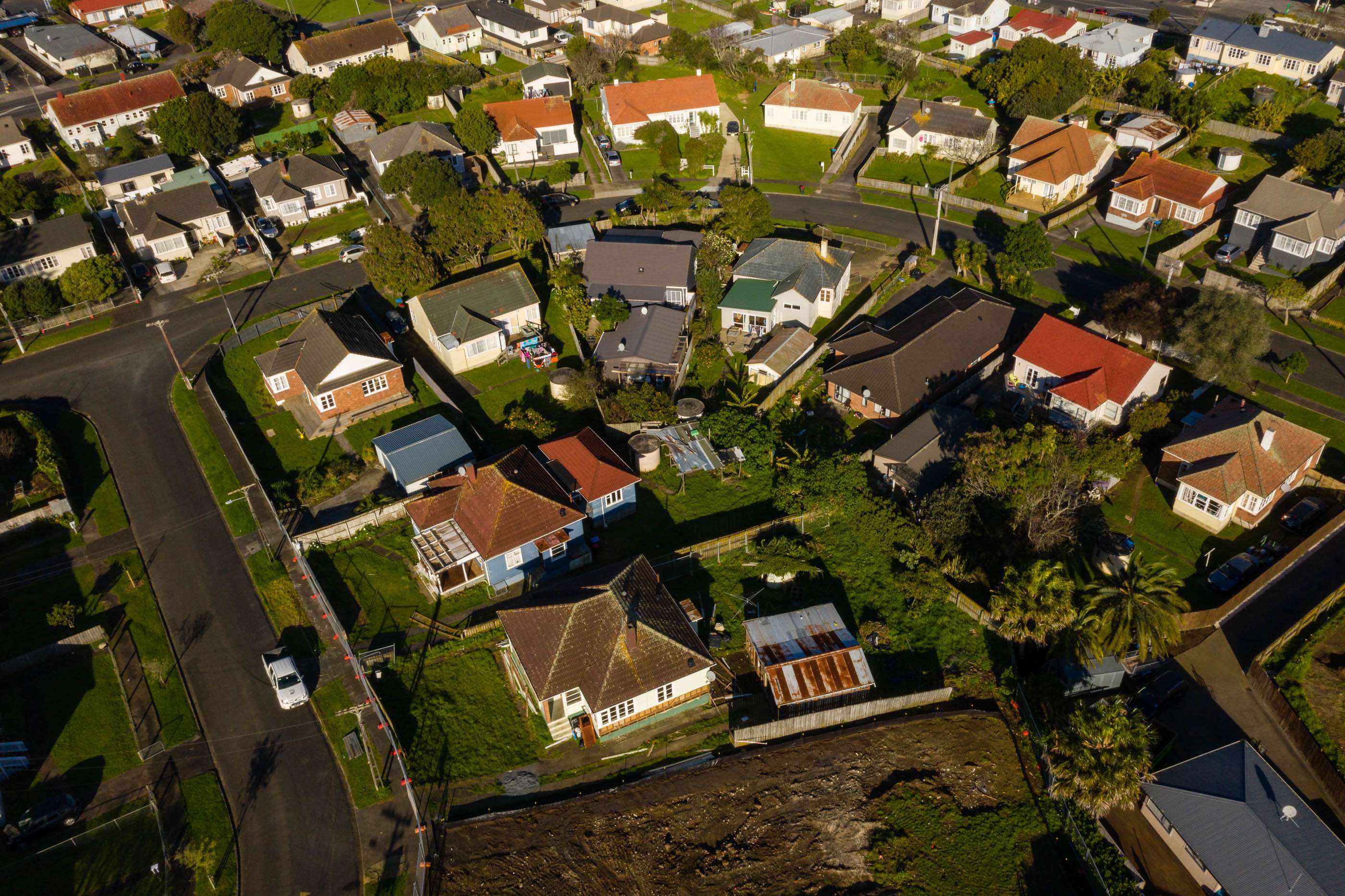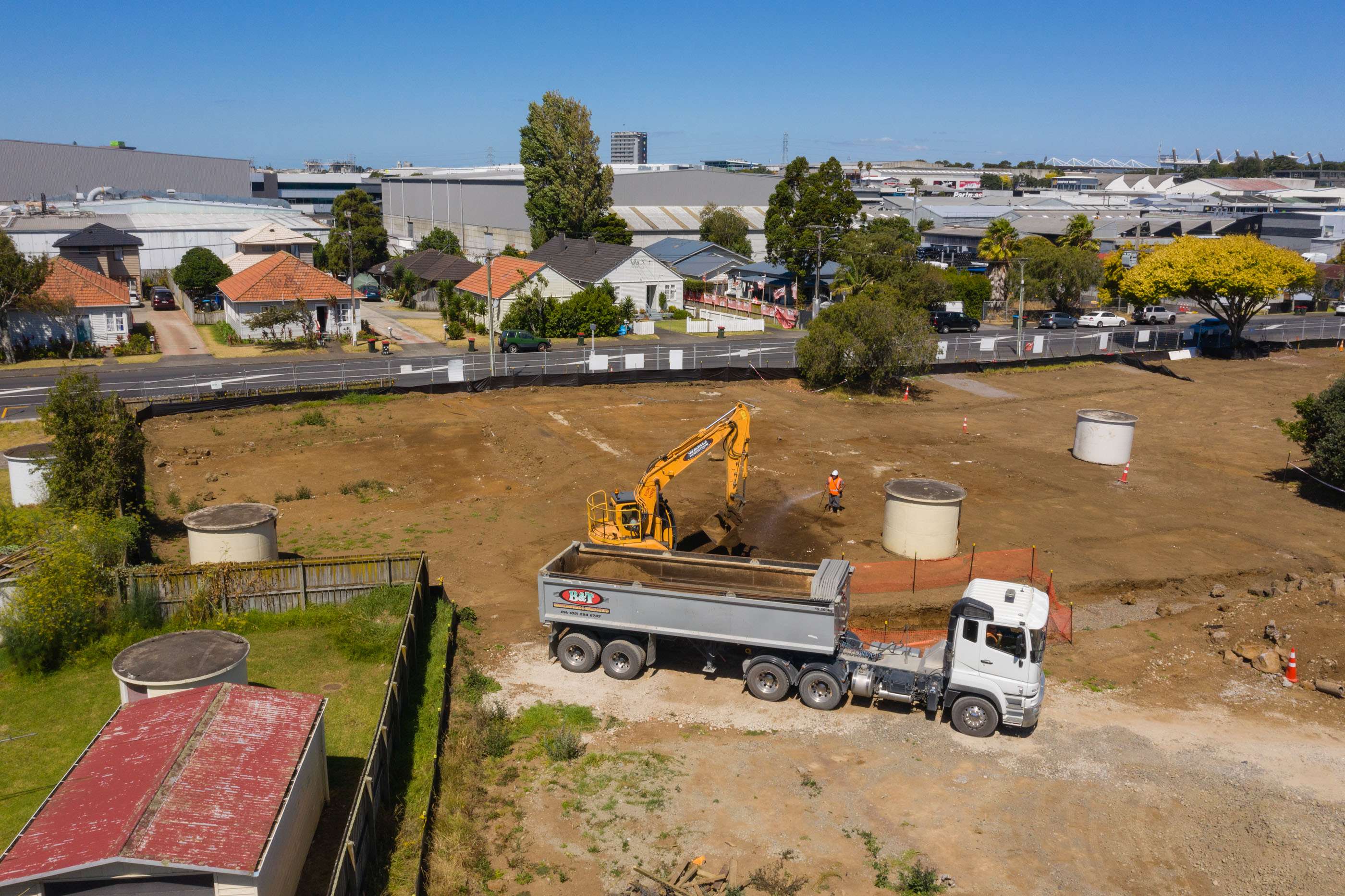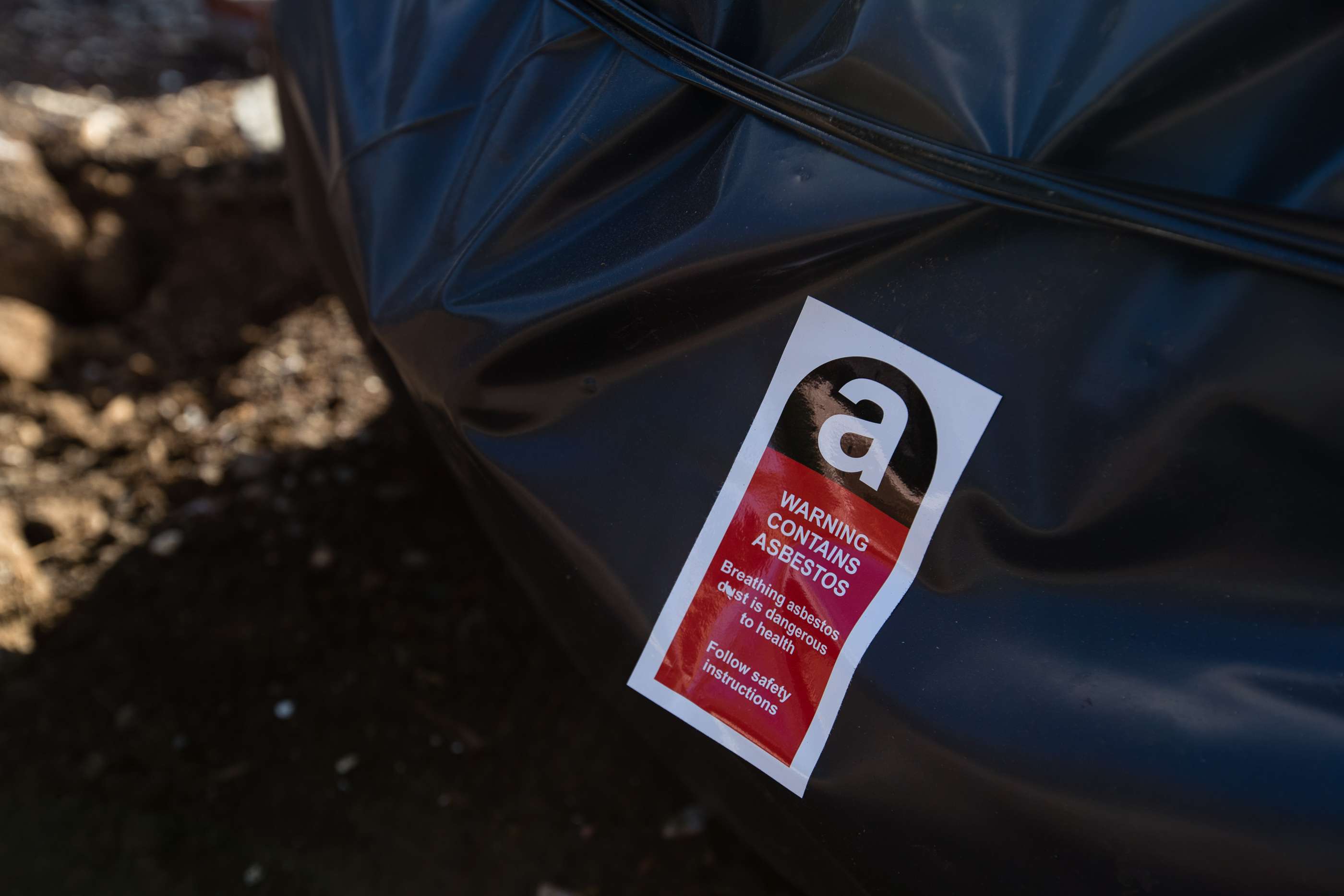As thousands of new homes are being built across Auckland, few realise just how much work goes into not just the regeneration of the housing areas – but the regeneration of the very soil on which they stand.
It’s the hidden work no one sees – but that has lasting benefits for the workers redeveloping the land and building new homes, the people who will live in them, and the quality of Auckland’s environment.
The team undertaking this work is land development specialists, Piritahi. They are an alliance of civil design and construction companies working with owner-participant Kāinga Ora – Homes and Communities. Together they are streamlining land development, laying the groundwork for neighbourhoods that are better to live in and homes that are more affordable.

Start your property search
The Auckland suburb of Oranga, where approximately 1,000 new homes will be built over eight years. Photo / Supplied
Over the next 10 years, approximately 5000 state houses will be replaced by 25,000 new warm, dry homes in urban redevelopments across Auckland – including Northcote, Roskill, Māngere and Oranga. Of these new homes, 11,000 will be public housing and 13,000 will be sold to private buyers, including through more affordable ownership schemes.
As part of this massive programme it is critical that, before the building starts, the land is safe and ready for new builds.

The site in Oranga under remediation, with an area of topsoil being safely stripped. Photo / Supplied
Lean Phuah, Piritahi’s land remediation specialist and her colleagues take care of this process. It involves testing the sites on which old state homes, no longer fit for purpose, sit and removing or encapsulating topsoil where levels of contaminants are above desired thresholds.
The aim is to remediate land in a manner that makes development sites sustainable for future use.
Houses of the 40s and 50s eras were often built from timber and asbestos materials. Phuah says. “What happens over time is lead from paint and maintenance activities – like dust from scraping down a house – leach into the soil.”

Asbestos gets safely removed from the site. Photo / Supplied
With the extent of civil construction activities planned for these sites, the soil will be disturbed in preparation for new housing.
In an uncontrolled setting, contaminants can pose health risks to some people where levels are too high – lead poisoning can cause physical illness and problems in cognitive development, while asbestos (if inhaled in significant quantities over a sustained period of time) has been implicated in asbestosis or mesothelioma.
“It’s therefore extremely important that the land we’re working with is tested and suitably remediated in preparation for future generations to live on,” she says.
“It’s also important because it means our civil construction workers involved with the soil on these sites are protected. These substances can also run off or leach into waterways, so by undertaking the work as experts in a controlled manner, we prevent this from happening and help to promote Auckland’s ongoing environmental health."
- This content was created in partnership with Kāinga Ora


